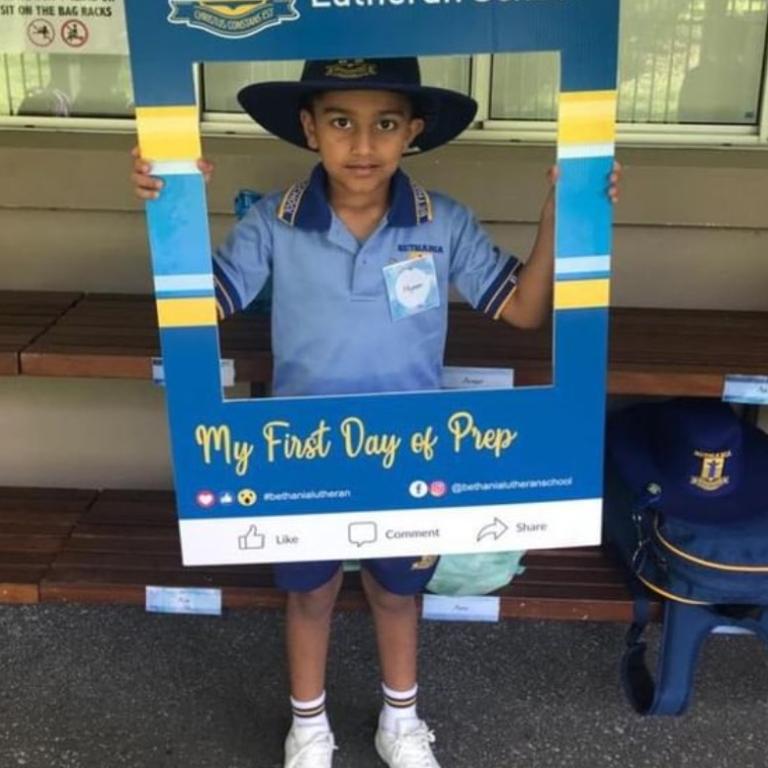Ryan’s Rule: What every parent should know when taking their child to hospital
The nightmare death of young Hiyaan Kapil after he was discharged from Logan Hospital has prompted calls for parents to be made aware of the Ryan’s Rule escalation process.
QLD News
Don't miss out on the headlines from QLD News. Followed categories will be added to My News.
A Queensland couple are living through every parent's’ worst nightmare after their son was discharged from Logan Hospital and died within hours.
Hiyaan Kapil’s tragic passing on Monday has brought back memories of Ryan Saunders, who died in 2007 from an undiagnosed Streptococcal infection which led to Toxic Shock Syndrome.

Queensland parents have taken to social media to share their own stories of their concerns being ignored, and incidents where they have called on Ryan’s Rule.
“My daughter got sent home from the Logan emergency only to end up getting picked up by critical care and transferred to QCH with pneumonia and a collapsed lung,” one mother posted.
Another parent wrote, “We all know our children or our own bodies more than anyone else so if something isn't right always push for a second or third opinion. Ryan’s Rule applies to all Queensland health patients.”
The Queensland public hospital rule was developed in response to Ryan dying from Toxic Shock Syndrome after his healthcare team failed to take serious action off his parents’ concerns.
In light of his death, the Department of Health made a commitment to introduce a patient, family, carer escalation process to reduce the possibility of a similar event happening.

The Ryan’s Rule escalation process
Step 1: Family/carer talks to a nurse or doctor about concerns. If they are not satisfied with the response, they can go to Step 2.
Step 2: Talk to the nurse in charge of the shift. If you they not satisfied with the response, go to the next step.
Step 3: Phone 13 HEALTH (13 43 25 84) or ask a nurse to phone, and request a Ryan’s Rule Clinical Review. The hospital name, patient’s name, ward and bed number (if known), and a contact number will need to be provided.
Once the rule is enacted, a nurse or doctor will undertake a Ryan’s Rule clinical review of the patient and the treatment they are receiving.
Currently there are 164 sites across all Hospital and Health Services in Queensland using Ryan’s Rule.
Who can use Ryan’s Rule?
Patients, families, guardians, carers.
When to use Ryan’s Rule
When a patient is looking worse or is not doing as well as expected.
When a patient shows any behaviour that is not normal for them.
When not to use Ryan’s Rule
Ryan’s Rule should only be used for concerns related to the patient’s condition getting worse or not improving as expected.
It’s only used while the patient is in hospital, or hospital-in-the-home service.
The rule is not for general complaints.
What if you don’t live in Queensland?
Ryan’s Rule is specific to Queensland but the Australian healthcare charter in each state gives patients the right to ask for a second opinion on their care and treatment.
Other states and territories have their own rules too:
REACH is the NSW equivalent to Ryan’s Rule.
It allows parents to ask for a clinical review – alerting medical staff that they wish to take things further.
If parents are still worried, they can call the hospital’s REACH number found on posters or flyers at the hospital.
REACH is not in all hospitals in NSW.
Canberra Hospital has a Patient and Family Escalation Process and Call and Respond Early (CARE).
Parents, patients or caregivers who feel a medical condition is worsening or not receiving an adequate response can phone an internal number to attain a response from the CARE Responder.
They will review the patient within 10 minutes, address the concerns, refer and liaise with other clinical staff as appropriate and provide feedback.
In Victoria and Western Australia, parents can ask to speak to patient liaison officers at individual hospitals to escalate a family members’ care. Western Australia also has the Health Consumers’ Council offering free advice and advocacy services to patients or carers who require assistance.
How to ask for help
Paediatric Registered Nurse Penny Blunden, who founded parent education site Sick Happens, said people were vulnerable when their children were sick, and it can fee chaotic and confusing when they are deteriorating.
Being clear and direct can help in having their concerns heard.
For parents who may not be quite ready to invoke Ryan’s Rule, there are a few statements that Ms Blunden recommends can communicate their concerns efficiently:
“I am very worried about my child. Can you please check them again?”
“I feel like no one is listening to me. Who can I speak to?”
“This is not normal for my child. They do not normally look/behave/sound like this.”
Ms Blunden believes Australia could benefit from one blanket rule for clinical reviews, rather than the multiple systems in place across various states and hospitals.
“Implementing a single nationwide system would be helpful for parents as it would remove any confusion or hesitation,” she said.
“One phone number and/or one sequence of escalation procedures would be helpful to streamline concerns and make sure all parents‘ concerns are heard, and action is taken quickly.”



